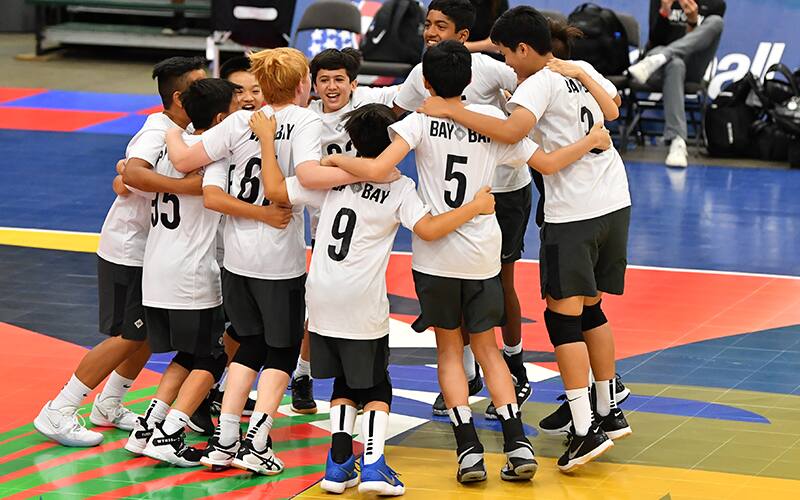
No one likes to think about getting hurt.
Even imagining an injury can be scary and overwhelming. But the reality of sport is that injuries happen and, unfortunately, sometimes the road to recovery can seem more like a rollercoaster than a highway. One way to make injuries and recovery process more manageable is to learn about the types of injuries that are common in volleyball and understand what to expect immediately following an injury – and throughout the recovery process.
Types of Injuries
There are two different types of injuries: acute and chronic.
Acute injuries happen suddenly at one point in time, like stepping on your teammate’s foot and rolling your ankle. In volleyball, the most common acute injuries are found in the lower body, specifically ankle sprains.
Chronic injuries develop over time as a result of repetitive movement. You don’t know exactly when it started, just that the pain slowly worsens; during practice, you notice an ache in your shoulder that you could previously ignore. The most common overuse injuries in volleyball are found in the shoulder, back and knee.
| Acute Injury | Chronic Injury | |
|---|---|---|
| Symptoms |
|
|
| Recovery Process |
|
|
| Recovery Timeline | Two weeks to nine months or more. | Expect flareups throughout an athlete’s career. |
Rehabilitation Process
By working closely with your physical therapist, athletic trainer and/or strength and conditioning coach, you’ll heal the injured area and prepare your entire body to return to play. Rehabilitation is designed to build from pain-free range of motion through resisted range of motion to complex movement patterns and end in sport-specific patterns.
- Pain-Free Range of Motion
- Resisted Range of Motion
- Complex Movement Patterns
- Sport-Specific Patterns
This process allows the injured body part to start with the basics and build up to more advanced movements. Sport-specific drills will utilize the entire body to prepare for your return to the court.
And even after returning, continue to work on exercises that keep the body balanced and support more complex movements. A little “pre-hab” can go a long way in preventing an(other) injury!
No Pain, Big Gains
Everyone knows the phrase “No pain, no gain,” but that is not the mindset to have during recovery. Pain is the body’s way of protecting you from doing something your body is not ready or able to do. During recovery, maintain a pain-free mindset when it comes to range of motion and beginning resistance exercises. External factors like surgery, physical therapy, ice or over-the-counter medications are tools to assist your body in the natural healing process, but it’s important to be patient during recovery.
Pushing the body past its limits during recovery, or returning to the court before properly healing, however, can be dangerous and ultimately hinder the recovery process and delay your return to the court. The body must go through a physiological process of healing. Some days, you’ll feel strong and healthy; other days will be painful and scary. Your doctors, physical therapists, athletic trainers, parents and coaches are all here to help you succeed and reach your goal of returning to regular activity. Lean on your support system to help you through the difficult days – and celebrate the recovery milestones – and always follow the recommendations of a medical professional.

